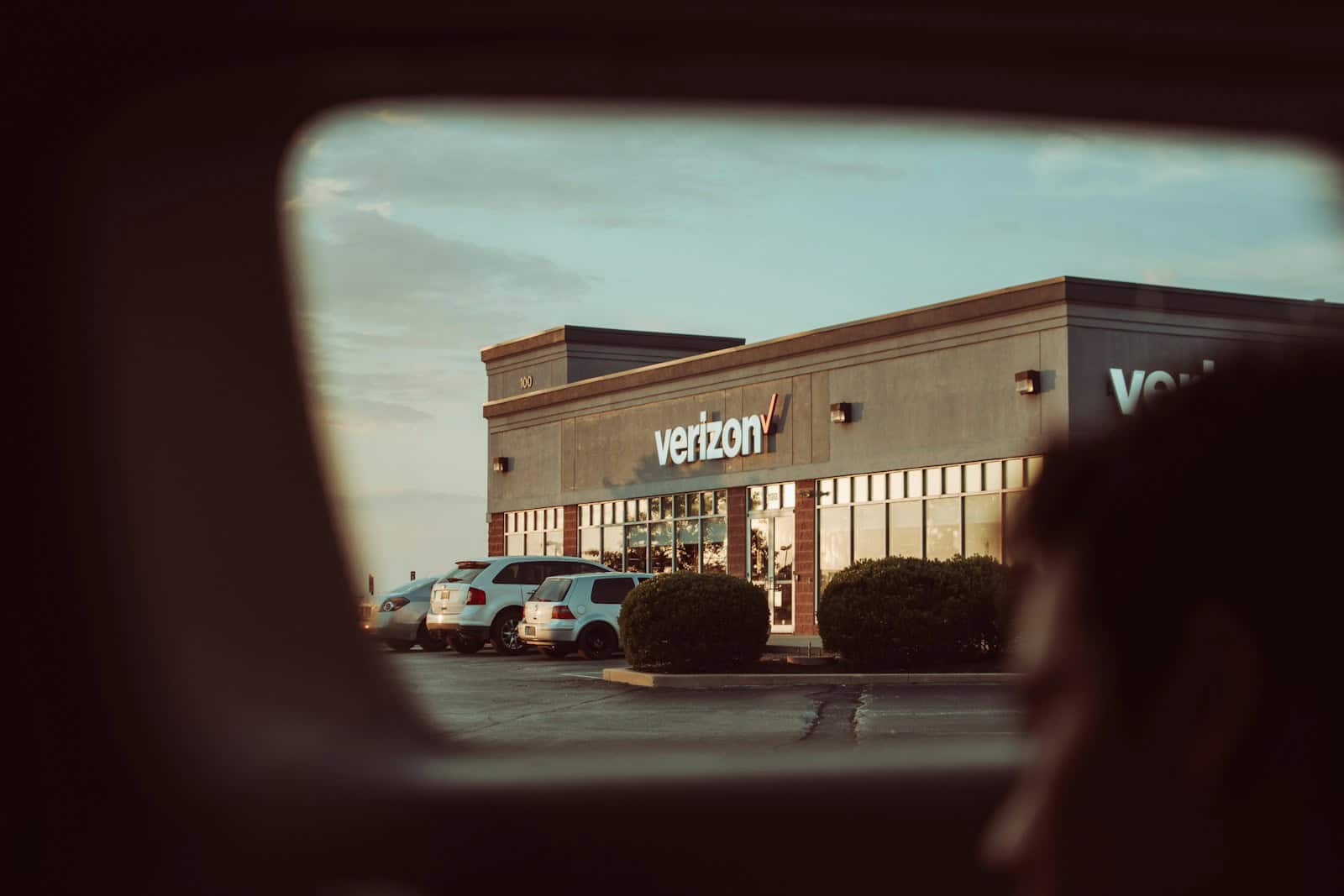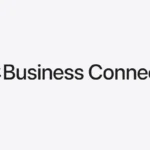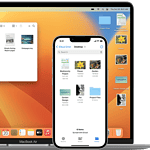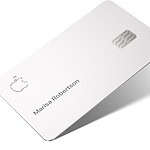Cell phone service providers offer plans to connect people through voice calls, text messages, and mobile data. These companies compete to provide the best coverage, fastest speeds, and most attractive pricing. Customers have many options to choose from in 2025.
The top cell phone carriers deliver reliable nationwide coverage and fast 5G networks. Smaller providers often use the major networks while offering more affordable plans. Factors like coverage in your area, data needs, and budget help determine the best provider for each person’s situation.
Top 10 Cell Phone Service Providers For 2025
Here are the top cell phone providers in the USA, including additional details like special promotions, customer reviews, and extra perks:
| Rank | Provider | Key Perks | Special Promotions (2025) | Customer Reviews | Notable Extras |
|---|---|---|---|---|---|
| 1 | Verizon | Reliable nationwide coverage, strong 5G network, premium plans | Free iPhone 15 with Unlimited Plus plan | High satisfaction with coverage; expensive | Apple Music and Disney+ trial included |
| 2 | T-Mobile | Affordable unlimited data, strong 5G, urban focus | Free Netflix with premium plans, $200 switch credit | Praised for perks, improving rural coverage | International texting and roaming included |
| 3 | AT&T | Strong 5G network, competitive pricing | $250 in bill credits for new customers | Solid coverage; missing streaming perks | Device trade-in deals for flagship smartphones |
| 4 | Mint Mobile | Affordable prepaid plans, flexible pricing | 6 months free for new customers on 12-month plans | Highly rated for affordability | Free international calls to Canada and Mexico |
| 5 | Xfinity Mobile | Verizon-based coverage, flexible data options | $100 gift card for new accounts with unlimited plans | Positive for savings; restrictive requirement | Includes access to millions of WiFi hotspots |
| 6 | Spectrum Mobile | Competitive pricing, Verizon-based network | Free unlimited data for 1 year with Spectrum Internet | Budget-friendly but dependent on bundling | No-cost risk-free trial up to 12 months |
| 7 | Cricket Wireless | Budget-friendly, good for families | Free Galaxy A14 for new customers on unlimited plans | Reliable coverage; slower 5G speeds reported | Multi-line discounts available |
| 8 | US Cellular | Focused on rural markets, localized customer service | $50 Visa gift card for switching | Excellent rural performance; limited coverage | Small business discounts available |
| 9 | Boost Mobile | Affordable unlimited plans, flexibility | Free Samsung Galaxy A13 for porting your number | Good value; occasional slowdowns reported | Free Tidal music subscription with select plans |
| 10 | Tello | Customizable plans, no contracts | Referral program offering $10 credits per referral | High satisfaction with flexibility | Free international calling to over 60 countries |
1) Verizon
Verizon stands as a leading cell phone service provider in the United States. The company offers a range of plans to suit different needs and budgets. Verizon’s network is known for its extensive coverage and reliability across the country.
Verizon’s Unlimited Plus plan is a top choice for many users. It provides unlimited talk, text, and data with no deprioritization threshold. The plan includes a generous 30GB mobile hotspot allowance, making it ideal for heavy data users and those who need to stay connected on the go.
For budget-conscious consumers, Verizon offers prepaid options through its subsidiary, Visible Wireless. Visible provides unlimited talk, text, and data starting at $25 per month. This affordable plan has made Visible a popular choice among prepaid carriers.
Verizon’s network also supports various mobile virtual network operators (MVNOs). These companies lease Verizon’s network to offer their own plans, often at lower prices than Verizon’s direct offerings. This gives consumers more options when choosing a Verizon-based service.
While Verizon’s plans can be pricier than some competitors, many users find the cost justified by the network’s reliability and coverage. The company continues to invest in its infrastructure, including the expansion of its 5G network.
2) AT&T
AT&T is a major player in the US telecommunications market. They offer a range of cell phone plans to suit different needs and budgets.
AT&T’s Value Plus plan provides unlimited data for $50.99 per month. This makes it one of their most affordable options for customers seeking unlimited data.
The carrier’s network coverage is extensive across the United States. AT&T continues to expand its 5G infrastructure, improving speeds and reliability for compatible devices.
Unlike some competitors, AT&T no longer includes bundled streaming services with its plans. This change may impact customers who previously enjoyed perks like HBO Max.
AT&T offers both postpaid and prepaid options. Postpaid plans typically come with better perks and access to the latest phone deals. Prepaid plans can be a good choice for budget-conscious consumers.
For those looking to save money, AT&T’s network is also used by several Mobile Virtual Network Operators (MVNOs). Cricket Wireless, for example, offers an unlimited plan on AT&T’s network for $25 per month.
AT&T’s plans and pricing are competitive, but customers should compare options carefully. Factors like coverage in specific areas and individual data needs will influence the best choice for each user.
3) T-Mobile
T-Mobile stands out as a major player in the U.S. wireless market. The carrier offers a range of plans to suit different needs and budgets. Its network coverage has expanded significantly in recent years, especially after merging with Sprint.
T-Mobile’s unlimited data plans are particularly competitive. They often include perks like Netflix subscriptions and international texting. The carrier also provides 5G access on most plans at no extra cost.
For budget-conscious customers, T-Mobile offers prepaid options through its Metro brand. These plans provide affordable alternatives without long-term commitments. Senior citizens can benefit from specially designed plans with discounted rates.
T-Mobile’s customer service has improved, earning praise for responsiveness. The company has invested in expanding rural coverage, aiming to reach more customers nationwide. Its “Un-carrier” approach continues to challenge industry norms.
Potential drawbacks include occasional network congestion in busy areas. Some users report slower speeds during peak hours. Rural coverage, while improving, may still lag behind competitors in certain regions.
T-Mobile frequently runs promotions on new devices and plan upgrades. These offers can provide substantial savings for new and existing customers. The carrier’s 5G network is rapidly expanding, promising faster speeds and better connectivity.
4) Mint Mobile
Mint Mobile offers affordable cell phone plans on T-Mobile’s network. The carrier specializes in prepaid plans with extended commitments.
Customers can choose from 4GB, 10GB, 15GB, or unlimited data plans. Mint Mobile provides discounts for longer prepaid terms of 3, 6, or 12 months.
All Mint plans include 5G access where available. The carrier supports bringing your own device or purchasing a new phone through their website.
Mint Mobile recently introduced a plan for seniors called Mint 55+. This $15 monthly plan is designed for users over 55 years old.
The carrier’s unlimited plan includes 35GB of high-speed data before potential slowdowns. Hotspot data is capped at 5GB per month on this plan.
Mint Mobile does not operate physical stores. Customer service is available online or by phone. The carrier offers a 7-day money-back guarantee for new customers to test the service.
International calling and roaming options are available as add-ons to Mint Mobile plans. The carrier frequently runs promotional deals for new customers signing up for longer commitments.
5) US Cellular
US Cellular offers cell phone service primarily in the Midwest and parts of the Western United States. The company provides both postpaid and prepaid plans to suit different customer needs.
US Cellular’s network uses a combination of 4G LTE and 5G technology. The carrier has been expanding its 5G coverage, focusing on rural and suburban areas.
Their plans include unlimited data options with varying speeds and prioritization levels. Some plans also feature mobile hotspot data and international calling benefits.
US Cellular differentiates itself through its focus on customer service and local presence in smaller markets. The company operates retail stores in many of the communities it serves.
For device selection, US Cellular offers a range of smartphones from major manufacturers. They also provide options for bringing your own device to their network.
US Cellular’s coverage may be limited compared to larger national carriers. However, they often excel in rural areas where other providers struggle to maintain service.
The carrier participates in the FCC’s Affordable Connectivity Program, offering discounted service to eligible low-income customers. This initiative aims to make mobile connectivity more accessible.
6) Cricket Wireless
Cricket Wireless offers budget-friendly cell phone plans on AT&T’s network. The company provides 4G LTE coverage and 5G service where available.
Cricket’s plans cater to different data needs. Light users can opt for the $30 per month plan. Heavy data users may prefer the unlimited plan at $55 per month.
All Cricket plans come with no annual contract. This flexibility appeals to customers who want to avoid long-term commitments.
The carrier uses AT&T’s network infrastructure. This ensures reliable coverage across much of the United States.
Cricket allows customers to bring their own compatible devices. Alternatively, users can purchase phones directly from Cricket. The company offers a range of budget and mid-range options.
5G access is included on select plans. This feature enables faster data speeds for compatible devices in 5G coverage areas.
Cricket provides mobile hotspot capabilities on some plans. This allows customers to share their cellular data with other devices.
The company frequently runs promotions for new customers. These deals may include discounted phones or bonus data allowances.
7) Xfinity Mobile
Xfinity Mobile offers cell phone plans for Comcast cable customers. The service uses Verizon’s network, providing reliable coverage across the United States.
Customers can choose between unlimited data or pay-per-gig plans. This flexibility allows users to select options that fit their needs and budgets.
The unlimited plan includes 5G access where available. After 20GB of usage, data speeds may slow during network congestion.
Xfinity Mobile allows up to 10 lines per account. Users can mix and match different data options for each line.
The service includes access to millions of Xfinity WiFi hotspots. This feature can help reduce cellular data usage and improve coverage in some areas.
Xfinity Mobile’s customer service receives positive ratings. The company’s mobile app allows users to manage their accounts easily.
One drawback is the requirement to have Xfinity Internet service. This limitation restricts availability to existing Comcast customers.
Pricing can be competitive, especially for families with multiple lines. However, individual users may find better deals with other carriers.
8) Spectrum Mobile
Spectrum Mobile offers cell phone service to Spectrum Internet customers. The provider uses Verizon’s network to deliver coverage across the United States. Spectrum Mobile has two main plan options: By the Gig and Unlimited.
By the Gig plans start at $14 per GB of data. Unlimited plans begin at $30 per month for one line. Both plans include unlimited talk and text. Spectrum Mobile allows customers to mix and match plans on family accounts.
The carrier provides a risk-free trial for new customers. Users can try the service for up to 12 months without commitment. Spectrum Mobile sells popular devices like iPhones, Samsung Galaxy phones, and Google Pixels.
Customers can save money by bundling mobile service with Spectrum Internet. The provider often runs promotions for free unlimited data for a year with qualifying internet plans. This bundle can result in significant savings.
Spectrum Mobile charges a one-time $10 activation fee for bringing your own device. The carrier supports both new phone purchases and BYOD options. Users can sign up online, by phone, or at Spectrum retail stores.
9) Boost Mobile
Boost Mobile offers a range of cell phone plans in 2025. The carrier operates on T-Mobile’s network, providing customers with access to 5G service.
Boost’s base unlimited plan stands out as a top value option. It includes 30GB of prioritized data. After this limit, speeds may slow during network congestion.
The carrier’s plans cater to various needs. Some include mobile hotspot data for sharing internet with other devices. Others focus on providing high-speed data for streaming and browsing.
Boost Mobile aims to serve customers looking for alternatives to major carriers. Their plans often come at competitive prices compared to larger providers.
In 2025, Boost continues to evolve its offerings. The company strives to balance affordable rates with reliable service. This approach appeals to budget-conscious consumers seeking decent coverage.
Boost’s plan structure allows flexibility. Customers can choose options that fit their data needs and budget constraints. This adaptability helps Boost remain relevant in the competitive mobile market.
10) Tello
Tello offers budget-friendly cell phone plans on T-Mobile’s network. The company provides flexible options for customers to customize their plans. Users can choose talk minutes, texts, and data amounts to fit their needs.
Tello’s plans start as low as $5 per month. Their unlimited data plan costs $25 monthly, making it one of the most affordable unlimited options. Customers can adjust their plans at any time without fees.
Family plans are available from Tello without extra charges for additional lines. Up to four people can be on a single account. This feature helps families save money on their mobile service.
Prepaid minutes are another option from Tello. Customers can buy 2,000 to 5,000 minutes for $20 to $50. This pay-as-you-go approach suits light phone users or those who want a backup line.
Tello uses T-Mobile’s network, giving subscribers access to widespread 4G LTE and 5G coverage. The service includes free calls to over 60 countries. Tello also offers mobile hotspot capabilities on its plans.
Understanding Network Coverage
Network coverage determines cell phone signal strength and connectivity. It varies by provider and location, affecting call quality and data speeds.
Types Of Networks: GSM Vs. CDMA
GSM and CDMA are two main cellular network technologies. GSM is more common globally, using SIM cards for easy device switching. CDMA is prevalent in some regions, especially in the US.
GSM networks offer wider international roaming capabilities. They allow simultaneous voice and data usage. CDMA networks provide better call quality in certain areas.
Most carriers now use 4G LTE technology, which works on both GSM and CDMA networks. This convergence has reduced the practical differences between the two for many users.
5G Expansion And Benefits
5G networks are rapidly expanding across the US. They offer significantly faster data speeds and lower latency compared to 4G LTE. This enables new applications like augmented reality and autonomous vehicles.
Major carriers are investing heavily in 5G infrastructure. Coverage is expanding in urban areas first, with rural rollout following. 5G speeds can reach up to 20 Gbps in ideal conditions.
Benefits of 5G include:
- Faster download and upload speeds
- Improved network capacity
- Reduced latency for real-time applications
- Support for more connected devices
Users need 5G-compatible devices to access these networks. As coverage expands, 5G is becoming a key factor in choosing a cell phone service provider.
Factors Affecting Service Quality
Cell phone service quality depends on several key factors. These elements directly impact user experience and satisfaction with their mobile provider.
Data Speed And Performance
Network technology plays a crucial role in data speeds. 5G networks offer the fastest speeds, followed by 4G LTE. Providers invest in upgrading their infrastructure to improve performance.
Coverage area affects signal strength and reliability. Urban areas typically have better coverage than rural regions. Providers use cell towers and small cells to expand their networks.
Network congestion can slow down data speeds during peak usage times. Providers manage this by adding capacity and optimizing their networks.
Some plans throttle data speeds after users reach certain usage thresholds. Higher-tier unlimited plans often offer priority data access.
Customer Service And Support
Response time is a key metric for customer support. Top providers aim to answer calls and chats quickly to minimize wait times.
Support channels vary between providers. Options may include phone, chat, email, social media, and in-store assistance.
Self-service tools like mobile apps and online accounts help users manage their services independently. These tools can reduce the need for direct support.
Staff knowledge and training impact support quality. Providers invest in educating their teams on products, services, and troubleshooting.
Issue resolution rates indicate how effectively providers solve customer problems. Higher rates typically correlate with better customer satisfaction.
Contract Vs. No-Contract Plans
Cell phone plans come in two main types: contract and no-contract. Each option has distinct advantages and drawbacks that can impact your mobile service experience and budget.
Pros And Cons Of Contract Plans
Contract plans typically offer newer phone models at discounted prices. Carriers subsidize the cost of devices in exchange for a long-term commitment. These plans often include larger data allowances and priority network access.
On the downside, contract plans lock customers into agreements lasting 12 to 24 months. Early termination fees can be costly if you want to switch providers. Monthly bills tend to be higher to cover the subsidized phone costs.
Contract plans suit users who want the latest smartphones and don’t mind committing to a single carrier. They can provide better value for heavy data users or those who frequently upgrade their devices.
Flexibility Of No-Contract Plans
No-contract plans, also called prepaid plans, offer month-to-month service without long-term commitments. Users can change providers or plans at any time without penalties. These plans often have lower monthly costs since they don’t include device subsidies.
Many no-contract plans now offer unlimited data options and access to major carrier networks. Users can bring their own devices or purchase phones at full price, spreading out the cost over time.
No-contract plans are ideal for budget-conscious consumers and those who prefer flexibility. They work well for light data users or people who keep their phones for longer periods. However, upfront phone costs can be higher, and some plans may have slower data speeds during network congestion.
Frequently Asked Questions
Cell phone service providers offer a range of plans and features to meet different needs. Pricing, coverage, and special offers vary widely between carriers. Let’s explore some common questions about finding the best service.
What are the highest-rated cell phone service providers currently?
Verizon, AT&T, and T-Mobile consistently rank as top providers. These carriers offer extensive nationwide coverage and fast data speeds. Customer satisfaction surveys often place Verizon at the top for reliability and network quality.
What are the most cost-effective cell phone service plans available?
Mint Mobile stands out for budget-conscious consumers. Their prepaid plans offer significant savings compared to major carriers. T-Mobile’s prepaid brand Metro also provides affordable options with good coverage.
How do service providers compare in terms of coverage and reliability?
Verizon leads in overall coverage, especially in rural areas. AT&T follows closely behind. T-Mobile excels in urban centers and has rapidly expanded its 5G network. US Cellular offers strong regional coverage in the Midwest.
Which cell phone service providers offer the best plans for seniors?
Consumer Cellular caters specifically to seniors with simple plans and AARP discounts. T-Mobile’s Unlimited 55+ plan provides good value for customers aged 55 and older. AT&T also offers senior-specific discounts on some plans.
What incentives are available for switching to a different provider?
Carriers often offer to pay off device balances or early termination fees to attract new customers. T-Mobile and Verizon frequently run promotions for free or discounted phones when switching. Some providers also offer bill credits or bonus data.
Which cell phone providers offer the best deals with free phones included in their plans?
AT&T and Verizon regularly offer free or heavily discounted flagship phones with new line activations on premium unlimited plans. T-Mobile provides similar deals, often bundling free 5G phones with their plans. Budget carriers like Cricket Wireless offer free entry-level smartphones with certain prepaid plans.







